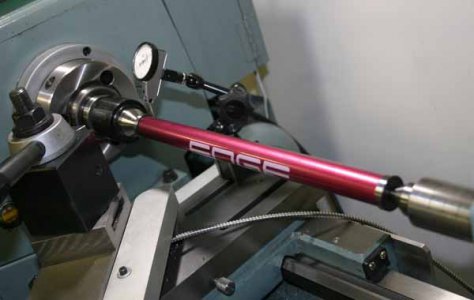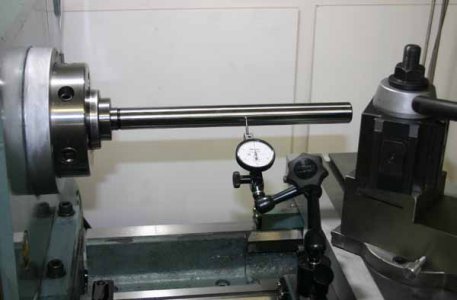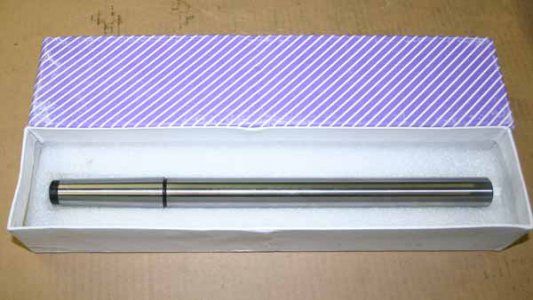Hi all....Attached is a photo of piece I am turning down with the purpose of putting an MT2 on it. My problem is this: I am getting a .005" taper over 2 1/2 inches and I'm having trouble figuring out why.
One thing that I see as I cut from right to left, using the power feed, is that as the tool makes contact with the workpiece the tool appears to push back very slightly. Before I engage the half-nut I pull back on the tool post to remove any back lash in the cross slide.
Oh! The other thing is this....the taper I'm getting doesn't always stay the same....sometimes when I make a pass I'll get no taper at all.
So I'm a little miffed as to what can be my problem...I make sure everything is tightened up and still end up with the problem.
I'd be more than happy to hear any ideas you all might have. Thanks!
Wino, I have an opinion. You appear to be using an SCLCR tool with a CCMT insert. I cannot tell what the nose radius is on your insert but it looks big so maybe a CCMT 32.52?
Can you tell us what insert you're using? You also do not mention the
depths of cut you're taking and this makes a difference. The other thing that matters is the
material you're turning and the speed you're using so can you fill in the blanks for us?
Let me clarify why I'm asking. A CCMT insert is a positive rake insert, which is good, but this insert has a radiused cutting edge; that is, it is not sharp. It also tends to have a generous nose radius that has a minimum depth of cut it must take in order to cut accurately; if you don't take a big enough cut it will not cut consistently and what's more, it will deflect a lot more than you would like. Your packaging will usually give you the recommended depth of cut for your insert and this is for a typical roughing cut. The minimum depth of cut your insert will take depends on a number of factors but, in general, you can get away with 1/2 the nose radius and get it to cut somewhat accurately. You have to try it and see what the tool wants from you in terms of how light a cut you can take and still get what you dial in. For example, if you have a CCMT 32.52 insert, the nose radius will be 0.03125" so the minimum depth of cut you might get away with is 0.016". Any less and the tool will deflect. Your most accurate cuts will be greater than 0.0400" deep.
This minimum depth of cut can vary with the material you're cutting, the speed and feed you use, whether or not you use cutting oil and the condition of your lathe. If the material is medium to high carbon steel or stainless then work hardening will really compound the deflection your insert produces.
So, give us some more info and include the cutting conditions (speed, feed, depth of cut) you're using and we can maybe give you better advice. At this point, I am guessing your biggest issue is deflection and all that implies.





